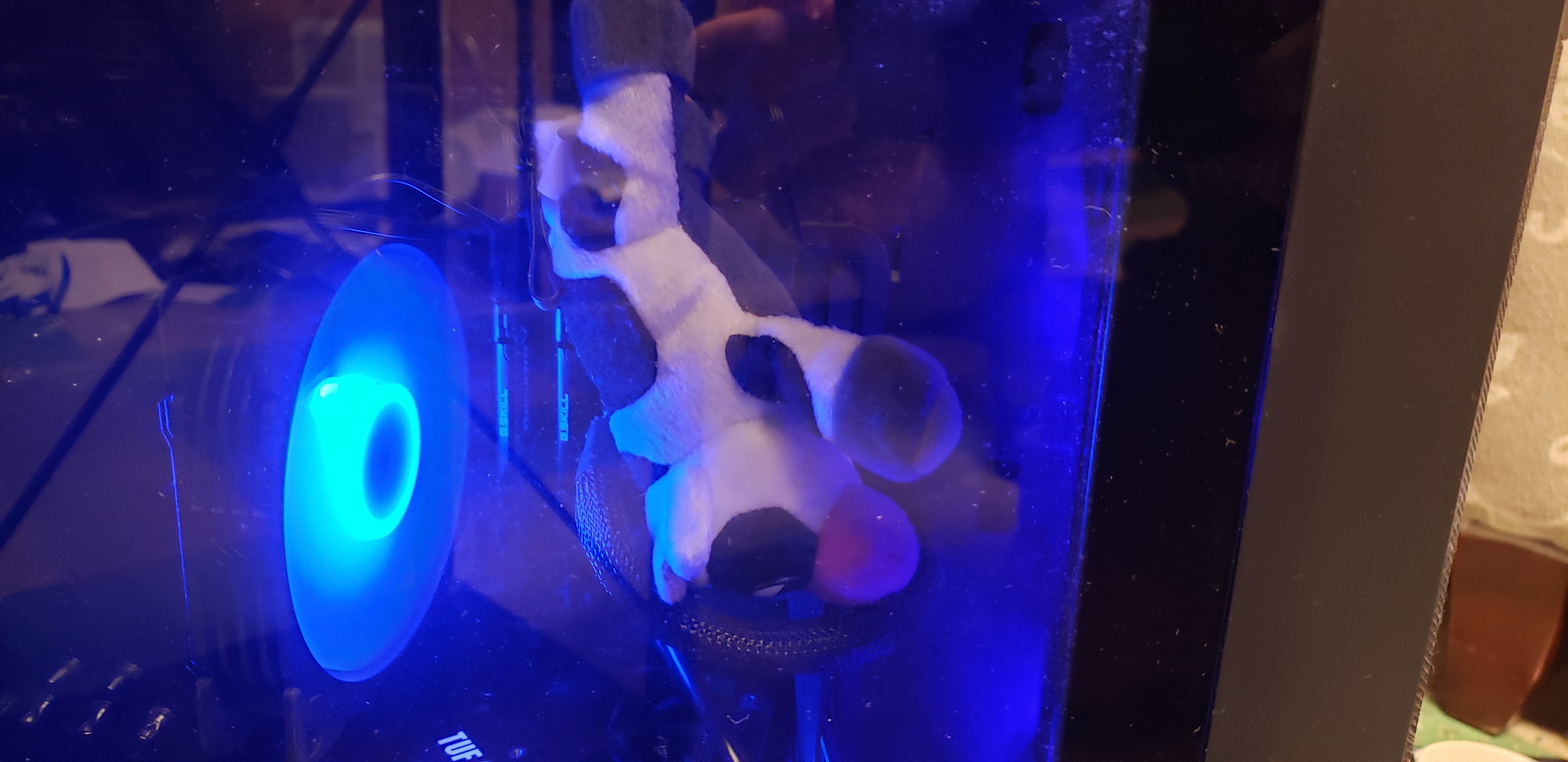- cross-posted to:
- [email protected]
- cross-posted to:
- [email protected]
I am shocked by this - the quote in below is very concerning:
“However, in 2024, the situation changed: balenaEtcher started sharing the file name of the image and the model of the USB stick with the Balena company and possibly with third parties.”
Can’t see myself using this software anymore…
have they tried also tracking for errors, cause it fucks up every second image unlike rufus
Truth. Etcher is garbage. Rufus is king.
Ahh too bad because balenaEtcher just werks for me.
If you actually read the post, you would have known, it does work, but there are some privacy concerns with it:
“However, in 2024, the situation changed: balenaEtcher started sharing the file name of the image and the model of the USB stick with the Balena company and possibly with third parties.”
I did read the post before constructing my comment and that’s why I feel sad for seeing privacy concerns popping up at balena, because that’s just my fav.
Glad I saw this. I downloaded the tool on recommendation from a forum post when I was reviving my homelab. I’ll nuke it for sure.
♬ Hello
ddmy old friend
I’ve comesudowith you again ♬
Hello cat or cp or pv… Or anything else that works with files
Huh this is news to me. Wonder why dd has been the defacto standard in guides everywhere for the past 15-20+ years
… and the sign said the bytes of the distro are written to the SD card …. if they’re un-tar’d …
Doesn’t the official guide recommend using GNOME Disk Utility anyway?
i still don’t understand why anyone would use etcher. it’s an electron wrapper over
dd. it’s 80MB where rufus is 1.5. when it appeared there were already other programs that did its job better.Rufus seems to be just for Windows and dd does not have a gui
that’s correct. on windows, rufus is a better tool, and on linux or mac it’s just a built-in command with a manual packed in.
also, ubuntu ships with startup image creator, and gnome disks ships as a flatpak, if those are more your speed.
Thanks for the info, I’m on linux mint and after checking these out it isn’t immediately apparent from their websites whether or how I could install them. Still think etcher occupies a niche that alternatives don’t fill, its website directs you straight to installing it, it’s cross platform, and using it is very easy, so it’s something that could reasonably be linked to in various install tutorials.
on mint you install them as packages.
I’ve typically used Etcher when I have to write an ISO on Windows
use rufus.
I like clicking buttons that have a text on them saying what they do instead of trying to memorize a gajillion terminal commands and flags where I have to enter more commands and flags to see what they do.
On Windows, Rufus is just as easy to use tho. And on Linux, there is Gnome Disks.
use rufus.
plus it’s some some sanity checks like not showing you your system drives. Or warning you when the drive you are about to nuke is suspiciously large and maybe not the usb drive you actually want to use.
This is basically the main feature. Stopping you from fatfingering the wrong drive
I used it because that’s what the instructions on the Linux Mint website for creating a bootable USB stick from Windows say to do.
I have no clue what “electron wrapper”, “dd”, or “rufus” are. I’m trying to learn more, but can’t learn it all in one day.
weird that the installation guide is hosted on a separate website that hasn’t been updated in eight years. that’s irresponsible of them. anyway rufus is a better version of etcher that you can download for windows.
ddI’ve been avoiding it ever since the Balena moniker change.
Sudo dd if=tails.iso of=/dev/sdb
bash: Sudo: command not found
Sudontplease :P
Lol, nice one
Ah, a
doasuser, I see!Or working on a case sensitive system
Oh, damn, that was the joke!? Went right over my head lol
In my early days of Linux, I royally fucked up a USB thumb drive (back when they were expensive) using
ddand as a result do not trust myself with it.I would use Hannah Montana Linux if it was the only GUI option to burn a USB ISO.
Weird. I can’t even tell you how many times I’ve used that command. But it’s probably been several thousand. And I’ve never screwed up a flash drive that way.
There has been once or twice where I’ve pulled the flash drive out too quickly after it finished writing and it actually hadn’t finished writing and had to redo it, but other than that, I’ve not actually screwed up any drives beyond repair or anything.
deleted by creator
Oh, sorry. I didn’t realize you were on Windows. That’s a Linux command. I haven’t used Windows very much since about 2018, so I don’t even consider Windows anymore unless it’s brought up.
deleted by creator
Rufus.
And who cares if there’s spyware on windows, you’re already using windows so there is, it’s windows. At that point you may as well just use etcher, but I’d use Rufus anyway because let’s be real it’s just better. The only reason not to use Rufus is because it’s windows exclusive, but if you’re using windows that probably doesn’t bother you, so…
Install wsl lol.
Install WSL
Friendship ended with Balena
Now Rufus is my new best friend
I remember a while back, years before this surfaced, there was a thread on /g/ with a group photo of Balena’s employees and a caption like “why does it take so many people to develop an electron wrapper around dd”. Obviously it was low effort engagement bait (balena does much more than etcher), but the comments were full of people calling the company a glowie honeypot and the like. Moral of the story: Trust the schizos, they sense spyware form lightyears away.
So tor is compromised?
Why use a fancy GUI tool when good old
dddoes the trickBecause of the risk of accidentally wiping the main drive if you’re just copy pasting stuff
If that happens to you, that’s both a great reminder that mindlessly copy-pasting commands from the internet is a terrible idea, and a chance to practice your restore-from-backup routine! I see no downsides.
pvfor life.dd status=progresscan also tell you how far along the operation is.Dang, nice! I’ve been using dd for nearly 30 years and have never seen that. I actually used to used dcfldd because it had better progress reporting than dd (and supported repeated patterns for input). Thanks for sharing!
cat is the tool of distinguished gentlemen
cp command works well too
for Windows
What options are there for flashing to SD cards? Something that works on Mac too would be nice. A gui is preferred.
Plug your usb drive in and run lsblk to figure out which letter to use instead of x in /dev/sdx
sudo dd if=image.iso of=/dev/sdx bs=1M status=progress
EDIT: I totally didn’t read your request. This is not gui or Mac based, but it still might help someone.
Mac should have dd,
I’d assume lsblk as wellnot lsblk though. There’s fdisk thoughI’m pretty sure mac, being based off freebsd, would include dd
Thanks for trying.
I’m not against terminal, but I’d just have to look up commands every time that I rarely use.
The comment said “SD Card” so it would be
/dev/mmcblk*I use a microSD to usb adapter and have 2 spinning rust disks. So it’s /sdc for me, but i still always double check. Dd isn’t called the disk destroyer for nothing.
.
https://circle.gnome.org? Never tried their ISO software, I just use dd.
Can always use dd but I always go stupid when I need to set boot flags and all that crap, which is so much easier with etcher. I think I’ve done dd with gparted in the past.
deleted by creator
i’ve never needed to set a single flag with dd. i just do
if=the_iso of=the_disk. what flags?Don’t you need to mark usb disks as bootable if you want to boot from them to install Linux or whatever
i think it depends on the image you get - for archlinux you can simply cat (or dd) the file onto a usb stick and it works perfectly fine, bootable. but i think i have seen an image at some point where it didn’t work, but i don’t recall what it was.
It won’t depend. I think it’s because back in the day we never had an easy way to force boot a device, if a device wasn’t flagged as bootable it wouldn’t boot
that’s not something i’ve ever had to do, i’ve only done that for hard drives.
I just use Gnome Disks for convenience over dd.
is there something special needed for windows isos, it doesnt seem to want to boot for me
I knew that UI had something to hide!
Never trust an overly fancy UI…
nah, plenty of good stuff with good ui.
balena had effects and stuff but a pretty tasteless gui tbh, and ads promoting other shit…





















